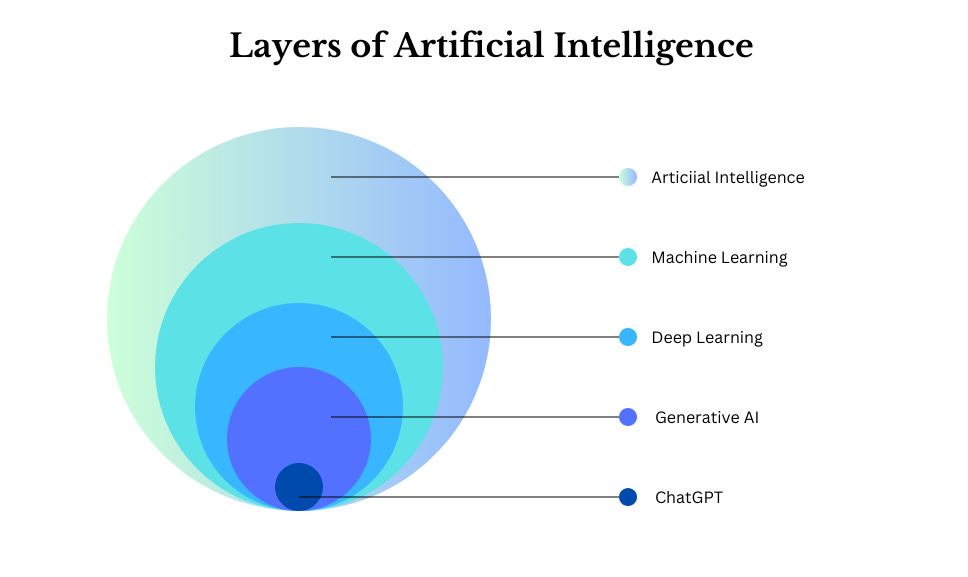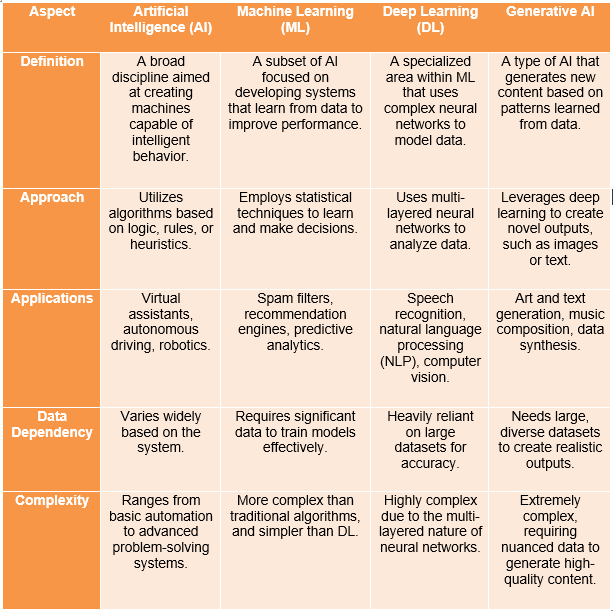From AI to Gen AI: Understanding the Evolution of Intelligent Machines
Explore how AI, ML, DL, and Generative AI interconnect, shaping innovations like ChatGPT and transforming industries worldwide.
According to Artificial Analysis AI, OpenAI's model o1 is currently at the top of the leaderboard. But do you know how it all began? And what is the difference between AI, ML, DL, and Gen AI?
After ChatGPT launched on November 30, 2022, interest in artificial intelligence grew rapidly across many industries. ChatGPT, short for Generative Pre-Trained Transformer, is an AI system created by OpenAI.
It allows users to have natural conversations with the AI, making it accessible for anyone to try. Its release made people rethink how AI affects our economy and daily lives. One thing is certain: AI is becoming a major part of our world and will significantly shape our future.
Generative AI, the technology behind tools like ChatGPT and DALL-E, relies heavily on two critical components: machine learning (ML) and deep learning (DL). These technologies form the foundation of generative AI, enabling it to create new content, whether text, images, or music.
In this chapter, you'll get an overview of how ML and DL contribute to the development of generative AI and its present capabilities.
Artificial intelligence is not a single field. It is a broad term that includes many technologies to enhance human abilities. The diagram below explains how AI, machine learning (ML), deep learning (DL), and generative AI are related and how they work together.
Generative AI is the newest development in the larger AI field. It is changing the way we approach creativity and innovation. Machine learning and deep learning are important parts of how generative AI works.
Here’s a breakdown of the key differences between AI, ML, DL, and generative AI:
The journey from basic AI concepts to advanced language models like ChatGPT marks a significant evolution in artificial intelligence. Every step, from Machine Learning to Deep Learning, Generative AI, and Large Language Models, has brought us closer to creating machines capable of thinking, learning, and creating in ways once considered impossible.
The potential applications of these technologies are vast. AI can revolutionize healthcare, education, creative industries, and scientific research. It is set to play a central role in shaping the future of our world.
Yet, this power comes with responsibility. As AI systems grow more advanced and embedded in daily life, addressing ethical concerns, ensuring responsible development, and considering societal implications become critical.
The story of AI is far from over. As researchers push the limits of what's possible, more groundbreaking developments are on the horizon. The journey from Machine Learning to ChatGPT is only the beginning of what will be an exciting and transformative era.




